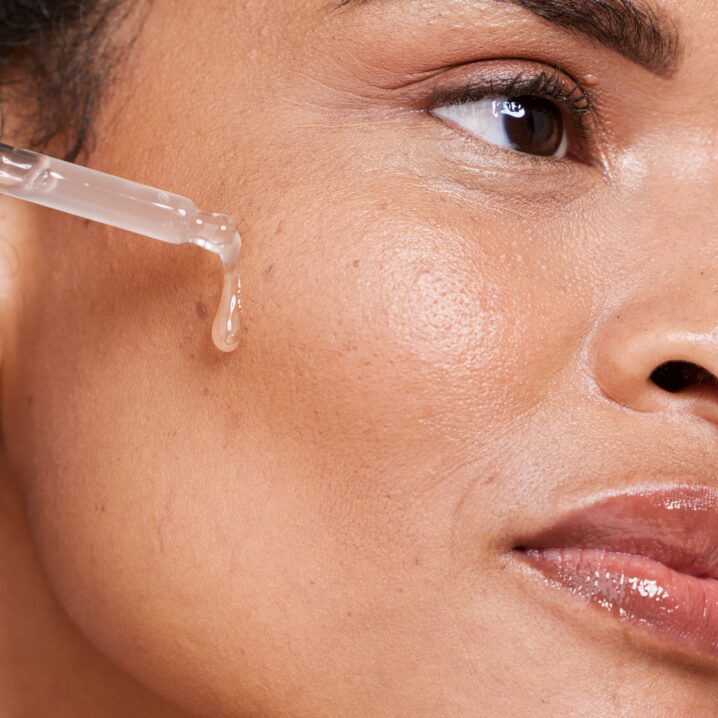
- POPSUGAR Australia
- Beauty
- All About Mandelic Acid and Its Skin-Care Benefits
All About Mandelic Acid and Its Skin-Care Benefits

Skin care is magical, albeit a little confusing. There are always new products to try and technological advancements to explore. That said, if you don’t know what you’re doing, things can get a little mad scientist very quickly. We’re all for experimenting and broadening your horizons with beauty, but you should do so responsibly, and that means knowing what’s what when it comes to skin-care ingredients. In today’s skin-school lesson, we’re tackling mandelic acid.
If you’re a skin-care novice, the word “acid” may drum up some feelings of hesitation. But have no fear: there are plenty of skin-care acids out there that, despite what you may have heard, don’t burn your face off.
If you want good skin, you can’t be afraid to dabble in a little exfoliation – and mandelic acid is a great place to start. “It’s a great entry-level acid – it’s mild, effective, and safe for all skin types,” Noreen Galaria, MD, FAAD, the CEO and co-founder of Inner Glow, tells POPSUGAR.
To learn more about its wonders, keep reading as two dermatologists break it all down.
What Is Mandelic Acid?
There are two different categories of acids: beta-hydroxy acids (BHAs) and alpha-hydroxy acids (AHAs). “Mandelic acid is a gentle alpha-hydroxy acid that is derived from bitter almonds,” says Dr. Galaria. The origin of the word “mandel” actually means almond in German.
Other popular AHAs include lactic and glycolic acid, but mandelic is even gentler. “Due to its large molecular size (twice the size of glycolic acid), it penetrates more slowly into the skin, which makes it very gentle, non-irritating, and suitable for those with sensitive skin,” says Robyn Gmyrek, MD, FAAD, a medical advisor for Delavie Sciences. Mandelic acid is also oil-soluble, allowing it to penetrate the skin on a deeper level than alternative water-soluble AHAs.
Mandelic Acid’s Benefits
So, what does mandelic acid do? As an AHA, it’s great for skin renewal and cellular turnover, helping you shed dead cells from the surface of your skin to reveal a smoother, more even, and radiant complexion. This makes mandelic acid great for anti-aging, addressing common concerns like wrinkles and fine lines. But that’s not all. “It’s antibacterial, so it can help combat acne-causing bacteria,” says Dr. Gmyrek. Additionally, it helps regulate oil production in the sebaceous glands.
If hyperpigmentation is a concern of yours – whether it’s melasma, post-inflammatory marks, or sun spots – mandelic acid is highly effective, and most people can use it. This includes those with skin sensitivities and dark skin tones. “These patients do not have the same arsenal of acids at our disposal,” says Dr. Galaria. Specifically, when speaking of dark skin, she adds, “Other acids, if used incorrectly, can cause pigmentation issues and even scarring. Mandelic acid is not irritating to our melanocytes in the same way and will help clear up pigmentary issues.”
How to Use Mandelic Acid
If you’re interested in using mandelic acid in your skin-care routine, you’re in luck: due to its gentle nature, it’s an easy one to add. You can find the ingredient in a variety of products, from toners to masks, but mandelic acid serums are the most popular.
After conducting a patch test to ensure you’re not allergic to the product (something you should be doing with every new formula you introduce into your routine), Dr. Gmyrek recommends you start by using it once a week; then work your way up to twice a week. The percentage of the active matters. “Start with a low concentration, around five percent, and you can increase if your skin tolerated it well.”
It should come after you cleanse your skin and before your moisturizer. Just be sure to use a broad-spectrum sunscreen of SPF 50 or higher during the day.
After introducing a product with mandelic acid into your routine, it doesn’t take long to see the benefits kick in. “Generally, with at-home products, you can start to feel your skin texture and tone begin to improve in the first week, but it takes over six weeks to see a difference in actual conditions like acne or melasma,” says Dr. Galaria.
Ingredients Mandelic Acid Shouldn’t Be Mixed With
Playing with acids can be a dangerous game. “During in-office peels, your dermatologist may combine mandelic with other AHAs and BHAs, and some formulas do contain a blend because this acid can play well with others,” says Dr. Galaria. That said, it’s best to avoid layering different acids at home. The same goes for retinoids and physical exfoliants.
“Because they all exfoliate the skin surface this could lead to excessive disruption of the skin, barrier, irritation, inflammation, and dermatitis,” says Dr. Gmyrek. Leave the mixing to the cosmetic chemists and dermatologists – after all, they are professionals.

